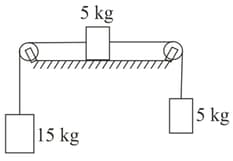Two Block Problems
Two Block Problems: Overview
This Topic covers sub-topics such as Condition for Relative Motion between Two Blocks, Motion of Two Blocks on Horizontal Plane, Motion of Two Blocks in Contact and, Motion of Two Blocks on Inclined Plane
Important Questions on Two Block Problems
Block of mass and block of mass are placed on a fixed triangular wedge by means of a massless inextensible string and a frictionless pulley as shown in figure. The wedge is inclined at to the horizontal on both sides. The coefficient of friction between block and the wedge is and that between block and the wedge is . If the system of and is released from rest, find the acceleration of .
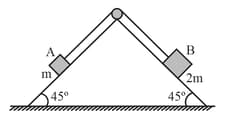
Two blocks connected by a massless string slide down an inclined plane having an angle of inclination of The masses of the two blocks are and respectively and the coefficients of friction of and with the inclined plane are 0.75 and 0.25 respectively. Assuming the string to the taut, find the tension in the string.
Two blocks connected by a massless string slide down an inclined plane having an angle of inclination of The masses of the two blocks are and respectively and the coefficients of friction of and with the inclined plane are and respectively. Assuming the string to be taut, find the common acceleration of two masses.
In the arrangement coefficient of friction between the two blocks is . The force of friction acting between the two blocks is:

A body B lies on a smooth horizontal table and another body A is placed on B. The coefficient of friction between A and B is . What acceleration given to B will cause slipping to occur between A and B
A man sitting in a train in motion is facing the engine. He tosses a coin up, the coin falls behind him. The train is moving
A single horizontal force F is applied to a block of mass , which is in contact with another block of mass (Given figure). If the surfaces are frictionless, the force between the blocks is

A body is moving down a long inclined plane of in . The co-efficient of kinetic friction between the body and the plane varies as where is the distance moved down the plane. The body will have its maximum velocity when it reaches
Two blocks of masses and are placed on a horizontal surface as shown in fig. The coefficient of friction between the blocks is and that between the block and the horizontal surface is . What is the maximum horizontal force that can be applied to block so that the two blocks move without slipping ? Take
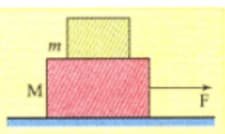
In figure, the coefficient of friction between the floor and the block is . The coefficient of friction between the blocks and is . The mass of is and of is. What is the maximum horizontal force can be applied to the block so that two blocks move together?
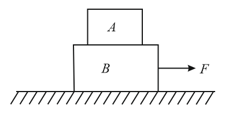
A block of mass is placed on rough horizontal surface whose coefficient of friction is If a horizontal force of is applied on it, then acceleration of the block will be
Blocks and are arranged as shown in the figure. The pulley is frictionless. The mass of is . The coefficient of friction between the block and the horizontal surface is . The minimum mass of , to start the motion, will be
A force is applied on the lower block as shown in figure. The work done by lower block on upper block for a displacement of of the upper block with respect to ground is
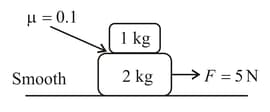
A block of mass is placed on a plank of mass which is placed on a smooth horizontal plane, as shown in the figure. The coefficient of friction between the block and the plank is If a horizontal force is applied on the plank, then the maximum value of for which the block and the plank move together is
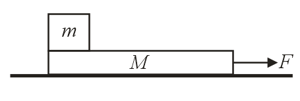
In the arrangement shown in the figure, if the blocks of masses and are released from the state of rest, tension in the string is ( coefficient of friction, string is massless and inextensible, pulley is frictionless)
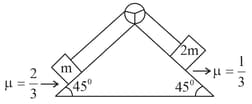
In the situation shown, the reading of the spring balance is

The system is pushed by the force as shown. All surfaces are smooth except between and . Friction coefficient between and is Minimum value of to prevent block from downward slipping is

Two blocks are placed on a wedge with coefficients of friction being different for two blocks. Choose the correct option. (friction is not sufficient to prevent the motion)
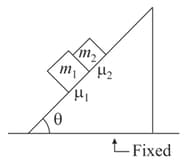
If acceleration of is which is smaller than acceleration of then the value of frictional force applied by on is :
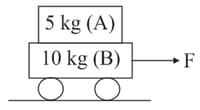
The friction coefficient between the table and the block shown in figure is . Find the tension in the string which is connected with both blocks.
